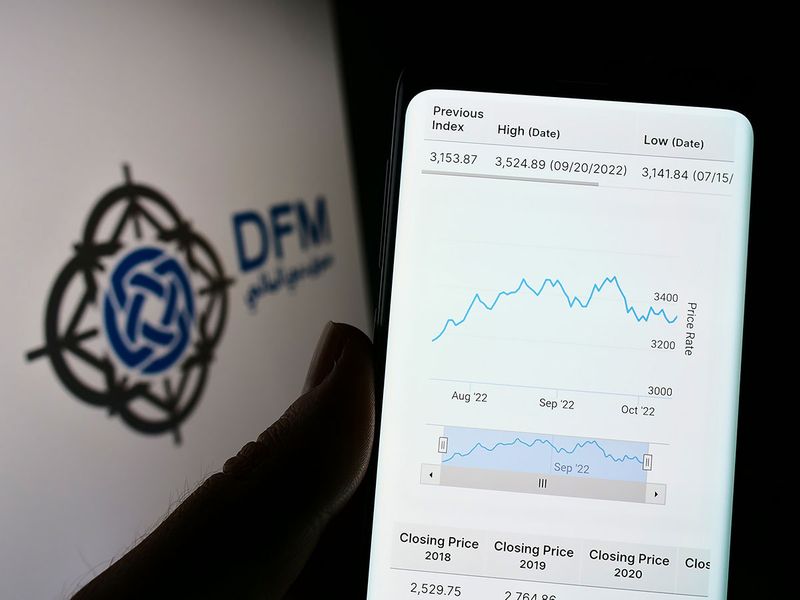
Dubai: Starting today, you can be one of the first investors to apply for the grocery retailer Spinneys’ initial public offering (IPO) in Dubai. Here's what you need to know about buying and owning the shares ahead of its public listing on May 9, and how you can go about it.
After Spinneys revealed it will sell 900 million shares, or a 25 per cent stake, new investors can start subscribing to the IPO at a price range of between Dh1.42 to Dh1.53 per share. The price range primarily indicates that the company values itself at Dh5.1 billion to Dh5.5 billion on listing.
Spinneys, an operator of premium grocery retail supermarkets under the ‘Spinneys’, ‘Waitrose’, and ‘Al Fair’ brands in the UAE and Oman, runs more than 70 stores in the UAE. On Tuesday, it said it would reserve 5 per cent stake for individual investors, with the rest for institutional investors.
"By investing and becoming a shareholder, investors will reap the benefit of pay-outs in the form of dividends. The company, which will pay out dividends in April and October each year, will allocate 70 per cent of its profits for shareholders as a pay-out," said Brody Dunn, a UAE-based investment manager.
How can investors subscribe to or buy Spinneys shares?
If you are looking to subscribe to or buy shares in Spinneys, you need to submit one subscription application, through your bank or brokerage, in your personal name (unless you are acting as a representative for another subscriber).
Investors can subscribe to Spinneys’ IPO through Emirates NBD, Abu Dhabi Commercial Bank, Abu Dhabi Islamic Bank, Ajman Bank, Commercial Bank of Dubai, Dubai Islamic Bank, Emirates Islamic Bank, First Abu Dhabi Bank, Mashreq Bank, Sharjah Islamic Bank, and Wio Bank.
“When investing, have an updated NIN and fill all relevant fields in the subscription application along with all the required documents and submit it to the bank, together with the subscription amount expected to be made during the offer period,” added Dunn.
Here’s a step-by-step guide.
• Register to DFM eServices at DFM website or DFM Smart Services mobile application
• Login with the username and password
• Select the eFORMS tab
• Select the form and complete it
• Attach the required documents and click on ‘Submit’
• The investor will receive the Investor Number through SMS
• You will be notified by email once the status of the request is updated
(UAE nationals and residents need a valid copy of Emirates National ID, while non-residents need a valid copy of the passport.)
After obtaining an Investor Number (NIN) from Dubai CSD, appoint a licensed broker by opening a trading account and complete the necessary forms. The broker carries out the trading transactions (selling and buying) at your instructions.
Different brokers may offer different services and products to their clients. To select a brokerage firm, view the full list of licensed brokerage firms on the DFM website, including common members across DFM and Nasdaq Dubai and their services. You can contact the brokers to inquire about the products and services they offer to investors.
The Dubai Financial Market (DFM) makes its website and its mobile application available to those with a National Investor Number (‘NIN’) and holding a valid iVESTOR card (which you can apply for on DFM when opening a trading account). This is also possible through online banking via UAE Central Bank payment gateway or through UAE Central Bank Fund Transfer (‘FTS’).
The investor choosing the FTS method will be required to provide their valid NIN, along with the value of the offer shares subscribed for, with the dates relevant to the methods of payment of the subscription amounts.

What is the minimum investment threshold for a potential Spinneys investor?
While the minimum subscription size for individual investors has been set at Dh5,000, any additional investments can be made in lots of at least Dh1,000. When it comes to institutional investors, the base subscription has been set at Dh1 million. There is no maximum limit, and each subscriber will be allocated a guaranteed minimum of 1,000 shares.
The share offering's subscription period for Spinneys investors is expected to run from April 23 to April 29, meaning starting today investors can subscribe to or buy shares. Before that, those looking to book shares must send in their forms via their respective banks and express their interest in buying shares.
Beyond April 29, individual investors cannot subscribe to or buy any more shares before trading commences. Similarly, after April 30, professional investors or institutions cannot subscribe to or buy any more shares, a day after which their investments will be allocated.
The price range at which you, as a potential investor, can subscribe to Spinneys IPO shares will be in UAE dirhams and published prior to or on the day of the opening of the offer period today. Investors will be allotted shares no later than April 30, and this is also when any excess subscription monies, if any, will be refunded back.
(What does it mean to 'allot' shares? When an IPO gets announced, investors from different categories start applying for shares. Once the applied share gets credited to their trading account, it is referred to as allotting shares or 'IPO allotment'.)
The final offer price will be determined on May 1. If you are an individual investor subscribing to Spinneys shares, you will get an SMS notification of the final and official allocations.
'Subscription' or a share that is 'subscribed' are terms used to describe newly issued shares that an investor agrees to purchase before the official listing date. Subscriptions are common during IPOs and subsequent offerings. Institutional or accredited investors are most often those eligible to subscribe to a new issue.
IPOs are often under-priced to ensure that the issue is fully subscribed or over-subscribed by the public investors, even if it results in the company not receiving the full value of its shares.
If an IPO is under-priced, the investors of the IPO expect a rise in the price of the shares on the offer day. It increases the demand for the issue. Furthermore, under-pricing compensates investors for the risk that they take by investing in the IPO.
An offer that is over-subscribed two to three times is widely considered among analysts to be a 'good IPO'.
What to keep in mind when buying shares in any IPO?
According to Dunn, here are a few factors to bear in mind before investing in an IPO:
• If you were wondering how you can increase your chances of an allotment in an IPO, here’s what you should know. All IPOs are most often available only for the first few days of the bidding process.
• If you are planning to bid, bid within the first few days, if possible on the first day of its availability. Bidding as early as possible increases your chances of allotment.
• Most often there will be more demand than supply for a new IPO. For this reason, there is no guarantee that all investors interested in an IPO will be able to purchase shares.
• Those interested in participating in an IPO may be able to do so through their brokerage firm, although access to an IPO can sometimes be limited to a firm’s larger clients.
• Generally speaking, IPOs are popular among investors because they tend to produce volatile price movements on the day of the IPO and shortly thereafter. This can often produce large gains.
• Ultimately, investors should judge each IPO according to the prospectus of the company going public, as well as their financial circumstances and risk tolerance, which is the amount of loss an investor is prepared to handle while making an investment decision.











